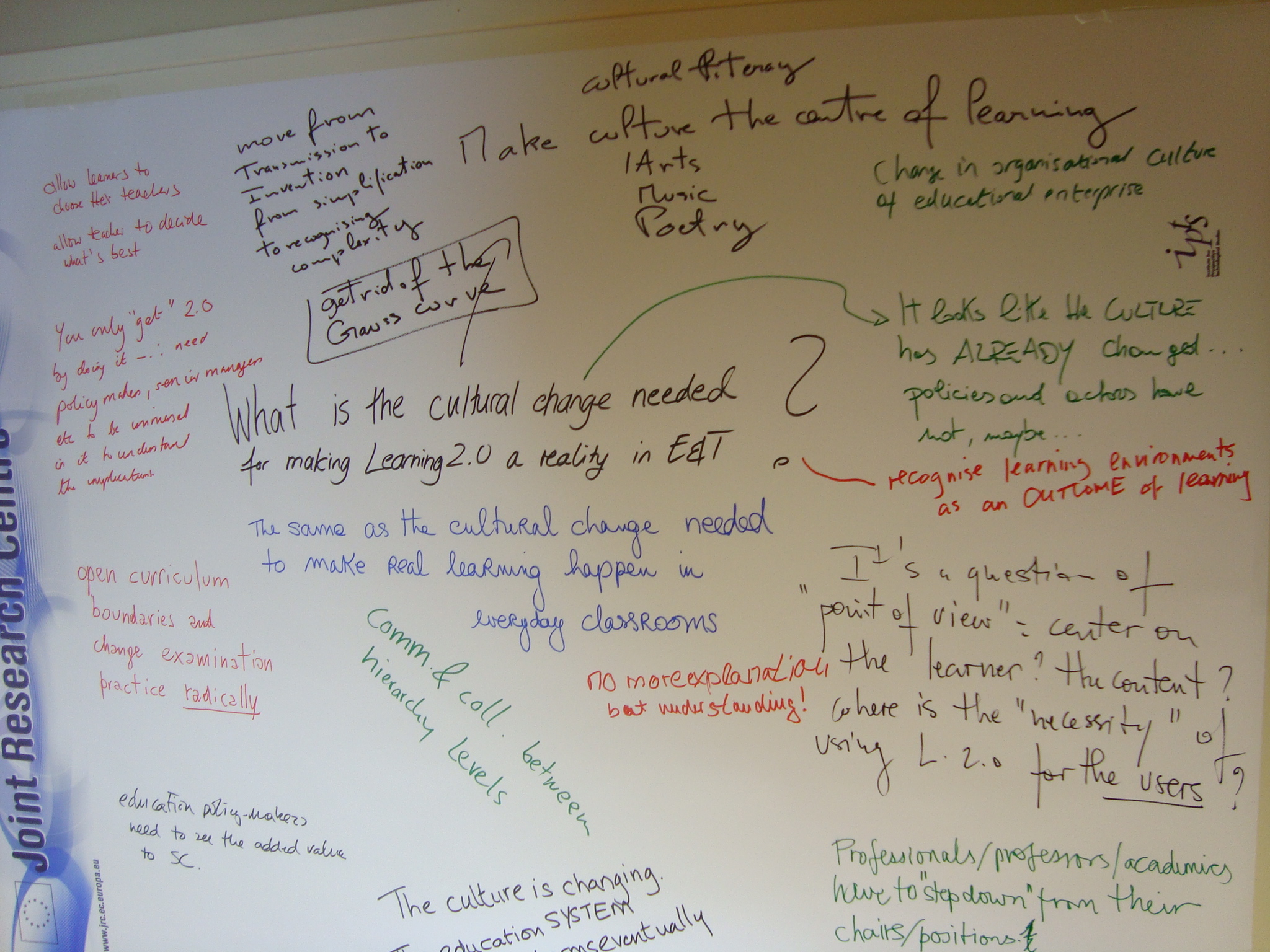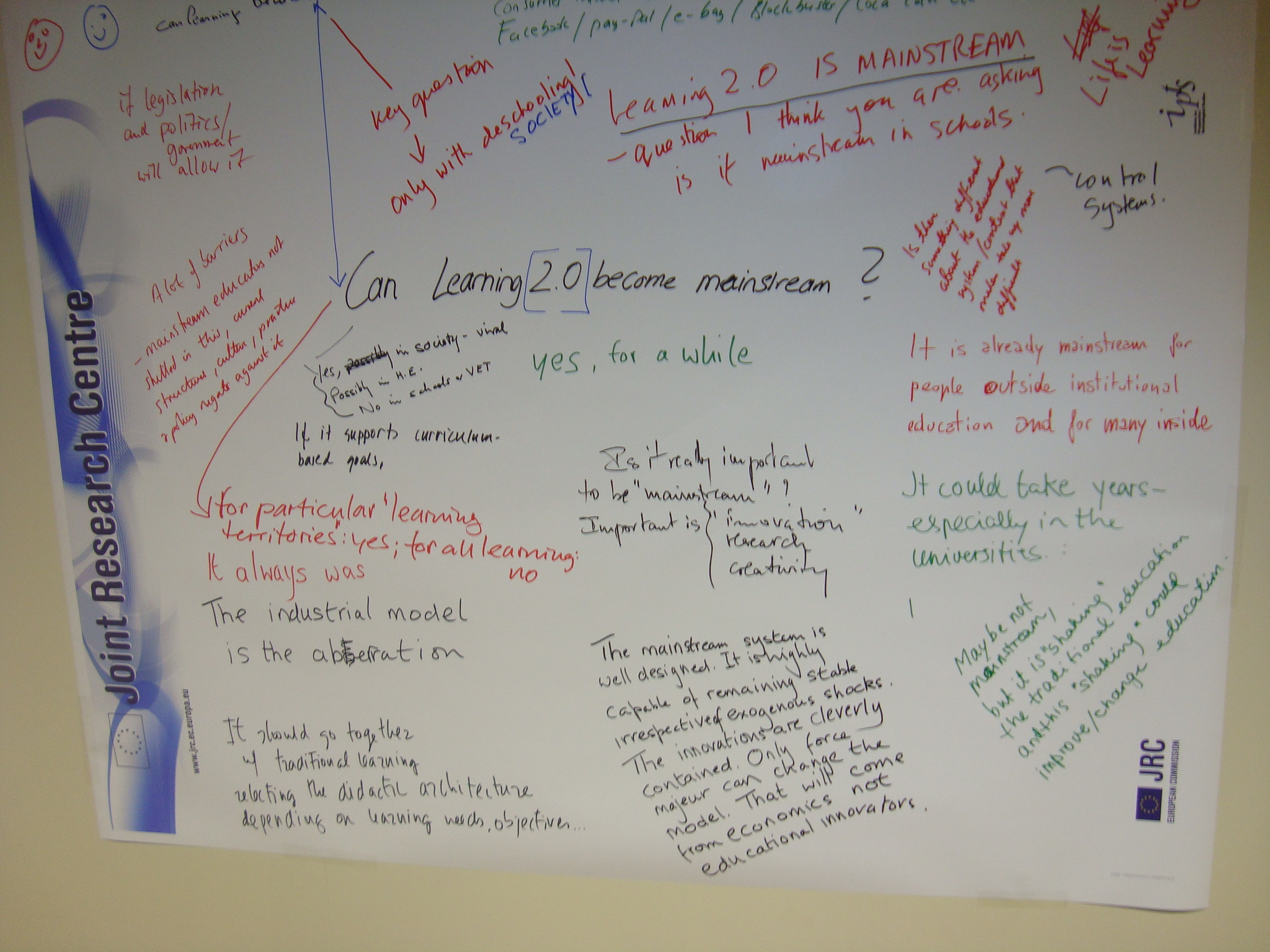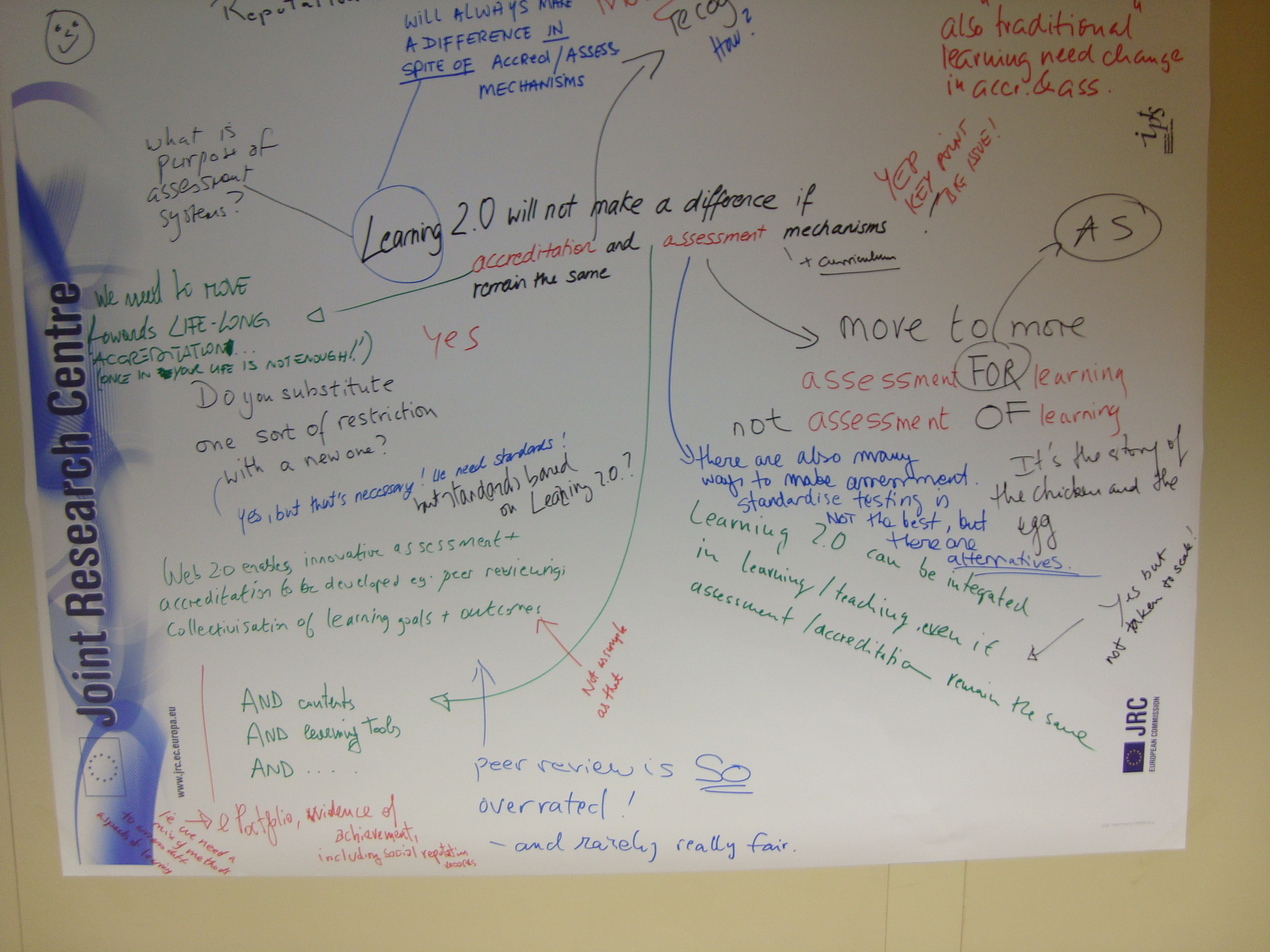More about learning 2.0
Another post on the IPTS seminar on Learning 2.0 in Seville. This workshop was interesting becuase it brought togther researchers and practitioners from all over Europe. And, somewhat to my surpise, there was a fair degree of consensus. We agreed social software provided many opportunties for creating, raher than passively consuming learning. We agreed that learnng opportunities were being developed outside the classroom. We even agreed that the locus of control was switching from institutions to the learners and that this might well be a good thing. We agreed we were moving towards individual learning pathways and that learners needed to be supported to finding their pathways.
We agreed that the context of learning was important. Mobile learning would become increasingly important with the development of context sensitive devices. (Also see Serge Ravet’s post on User Generated Content or User Generated Contexts).
But there were also limits to the consensus. Whilst there appeared agreement on new roles for teachers, no-one was sure what that role was?
Much of the discussion centred on the scaffolding of learning. How much support did leaners need and how much of that support would come from teachers?
Neither were participants agreed on the future role of institutions. More critically, was Learning 2.0 something which happened outside the school, and had only a limited impact on institutional practice, or did it pose a fundamental challenge for the future of schooling?
There was even greater disagreement over curriculum. Should there be a curriculum for basic skill and knowledge that everyone should learn? Did learners need a basic grounding in their subject before theyc oudl develop their own learning pathways? Who should define such a curriculum? What was the role of ‘experts’ and who were they anyway?
And perhaps the greatest disagreement was over assessment and accreditation. Many of us felt that we needed to move towards community based formative assessment. Employers, we said, would be more interested in what people were able to do than formal certicates. Others, pointing to occupations such as doctors and plumbers felt there should be some form of standards against which people should be assessed and accredited.
A final comment on the form of the project. Although the work is about Learning 2.0 the present form of the work is decidedly Research 1.0. This research is important enough that it needs to be opened out to the community. It seems a wiki is being d veloped and when it is up I will blog here about it. In the meantime here are some of the photos of the flip charts used for brainstorming around different issues at the workshop. I will pass on any comments on this post to the project organisers.







I have had some time to read and digest print deliverables. Now I have a fairly specific contribution to make. The project has understandably taken a generic use/systemic use approach to using social software in learning and either looked at new ways of providing a learning institution (or part of) through social media as exemplified by NotSchool or Schome, or, the use of social media applications an out-of-the-box way to support learning. The second format includes the formal inclusion of wikis into subject lessons and using social bookmarking and media sharing.
On reflection I realise three activities that I am currently pursuing have a slightly different and complimentary approach. The activities are:
Racing Academy: a elearning application based around a massive realistic automobile simulation;
icould: a resource for inspiring young people to think about careers; and
Locotav(working-title): a platform to create location based game like learning that stems from the Savannah game I developed at Futurelab and the work done in the DGEAC e-learning project COLLAGE.
In these cases we start with fairly specific educational purposes that could have fairly traditional style learning objectives applied to them (eg Bloom). What is different is that in each case we are also trying to raise the level of discourse between learners, provide opportunities for reflexivity, mutual understanding and problem solving and create on-going or transient communities of practice around a learning activity.
We are starting to design learning applications that are not social media apps like wiki or twitter or whatever. In some ways the activities are e-learning 0.8 alpha. We have a science and humanities simulations and a collection of video clips. However these applications are being designed and developed as though Web2.0 exists. At a technical level they are being written so that the data generated in the activity is open and mashable. Data gathered in a drag-race or designing a car in Racing Academy can be syndicated to other applications – which could be an e-portfolio or a wiki or a twitter feed or…….
At a social level the assumption is that learning will proceed through entry into discourse about the activities – talking about, recommending and sharing a career story, or, evaluating a group decision about a modification to a virtual racing car, or, sending a tweet to another set of actors in a location based scenario. In icould, for instance, we do not mind if the learner best uses the resource embedded in their own blog, as part of their MySpace activity, as part of something we devise, as part of something any third party devises or even embedded in a VLE.
I am coming to think of the projects as Web2.0 applications in their own right. The descriptors include: open, mashable, crowd-sourced, discussed, shared, re-utilisable, re-purposable, syndicated and most of all linked. They are interoperable but the opposite of elearning1.0’s standards – it is designed to be open not standardized. They are designed to use the facilities the network offers rather than constrain to a particular model of a learning environment.
I have arrived at my own way of thinking about developing eLearning 2.0 applications. If eLearning 0.9 Alpha was about stand alone applications, eLearning 1.0 is about networking applications in virtual learning environments (which is many cases means having much less interactivity than the earlier applications afforded), then eLearning 2.0 is about creating applications that work together over networks. Learning2.0 (as opposed to eLearning applications) however has much more of a flavour of what has gone before. It facilitates cognitive apprenticeship but can happily embrace Skinnerian programmed learning if that is what is required. It assumes the learner is a social being with many other things going on in their lives. It assumes the learner is engaged in a multi-logue, that life is in multiple parallel streams interacting with others rather than a neatly compartmentalised sequential process.
I am still struggling with what this means for teacher training. I have a record of 30 years (of lack of success) and I am still no wiser as to why people who regularly learn from tv themselves never think of using tv in their lessons. Today’s teachers happily book flights on-line, email their relatives in Canada and send photos from their mobile phone to their FlickR account, produce worksheets and surrogate blackboard notes (.ppt) and yet feel little inclination to use ICT in their day-to-day teaching. I suspect it has a lot to do with a phrase used by Roberto Carneiro at the workshop– value proposition- and all that entails for accreditation, preparation time and kerfuffle. As my energetic period in the secondary classroom was in the 1970’s there was a feeling of space for innovation – empowered by reprographics technology – where there was a clear value proposition.
Happy to continue this conversation.